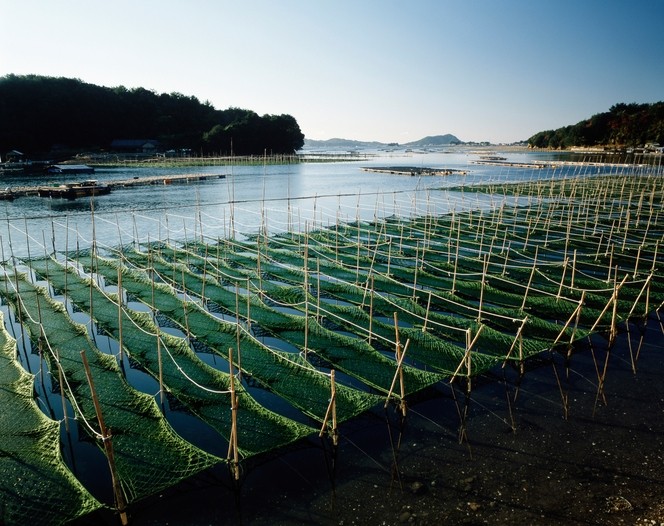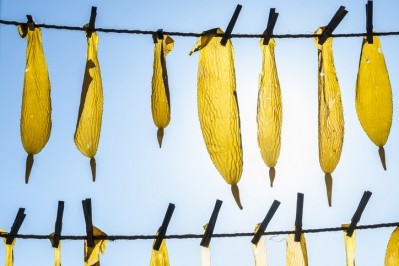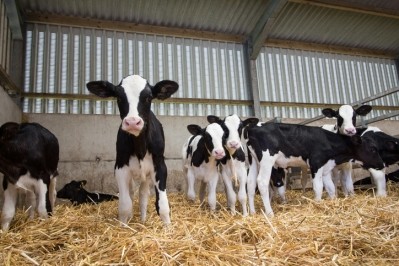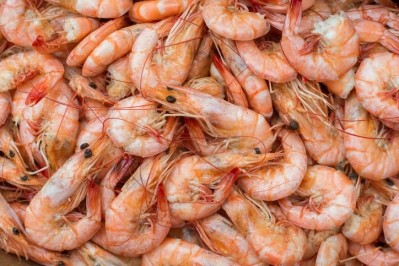Biofloc production systems may aid novel protein use shrimp feed

A team of researchers from the University of Sonora and the Center for Research in Food and Development in Mexico examined the use of a fishmeal alternative on the amino acid and fatty acid profiles in shrimp diets.
The work was published in the journal Aquaculture.
“The objective of the present study was to evaluate the effect of fishmeal replacement with a vegetable protein mixture on the amino acid and fatty acid profiles of diets, biofloc and shrimp cultured in low water salinity,” the researchers said.
The research group found that the fatty acid ratios varied among the different feeds examined but not in response to fishmeal content, they said.
“In biofloc systems, the fatty acid and amino acid composition of biofloc and shrimp are independent of the composition of the feed; these essential nutrients were present in both feed sources (experimental feed and biofloc),” the researchers said. “Even though neither is considered solely adequate for shrimp nutrition, the combination of both sources can be beneficial.”
Why fishmeal alternatives?
Shrimp culture has been growing annually, and is using increasing amounts of pelleted feed, the researchers said. Biofloc technology (BFT) lets shrimp be raised in higher densities allowing for smaller, inland farms that use low salinity water.
However, shrimp producers continue to use fishmeal as a primary protein source in feeds, and several commercial diets for young whiteleg shrimp have more than 25% fishmeal, they said. Fishmeal is used as it offers essential amino acids and is both palatable and digestible, but there are questions regarding the ongoing use of the feed ingredient.
Previous studies have explored swapping fishmeal with a vegetable meal, they said. In traditional farming establishments using a fishmeal replacement is difficult.
“The substitute ingredients must be digestible, preferably without anti-nutritional compounds, and they need to contain an adequate amino acid profile as well as an adequate amount of essential fatty acids (n − 3 and n − 6), which are scarce in terrestrial vegetables compared with the marine sources,” the researchers said.
Biofloc technology offers live and non-live feed proliferation and maintenance relies on an interaction in organic matter, communities of bacteria, microalgae, fungi, protozoans, nematode, rotifer and nitrogenous compounds, the researchers said.
Past work has found that organic matter in biofloc averages between 600 and 790g kg-1, on a dry basis, they said. This includes an amount of total protein, crude lipids, and total carbohydrates.
“In an experimental biofloc culture Roy et al. (2009) were able to replace fishmeal with alternative sources of animal and vegetable origin in shrimp diets without affecting growth, survival and feed conversion rate (FCR),” they said. “In another study, Bauer et al. (2012) found that the complete substitution of fishmeal with alternative sources of plant origin (soybean paste) and biofloc flour did not affect the growth, FCR, or survival of L. vannamei; although a deficiency of certain essential amino acids (lysine, histidine, threonine, phenylalanine and methionine) was observed.”
Other research found that the biofloc may offer a protein source for shrimp and that the microalgae community grown may provide essential fatty acids, they said. “Specific information related with amino acid and fatty acid profiles linked to feed-biofloc-shrimp tissue in diets with fishmeal replacement in biofloc systems is scarce,” they added.
FeedNavigator is running a free to access webinar on aqua feed innovation next week, Wednesday December 6. Register to hear experts speak about feed formulation, gut health, and novel proteins.
Feeding trial details
In the feeding trial, 2,500 litopenaeus vannamei shrimp were given one of five diets for a period of 35 days, said the researchers.
The diets included a commercial diet generated by Purina, and four experimental feeds, which had a fishmeal content of 300, 200, 100 or 0g kg-1, they said. Fishmeal was replaced by a combination of meals including corn, sorghum, wheat and soybean.
Bioflocs were naturally developed no using an added substrate, they said. Samples of biofloc and shrimp were collected at the end of the experimental period and analyzed for moisture, ash, fiber, crude protein, fatty acid levels and amino acids.
Shrimp were checked for feed conversion ratio (FCR), survival, final individual weight, weekly growth and the specific growth ratio was calculated, they said.
Results
Water quality results were found to be similar among the different diets, the researchers said. Shrimp productive parameters also were similar.
“The productive parameters of L. vannamei did not have significant differences among used diets,” they said. “The individual final weight of shrimp varied from 10.4 to 11.9 g; the weekly growth from 1.1 to 1.4 g week− 1; the survival from 93.3 to 100%; and the FCR from 1.7 to 1.8.”
The levels of non-essential and essential fatty acids in the shrimp varied among the different diets, said the researchers. “The essential fatty acid profile showed a high content of 20:5(n − 3) with an interval from 14.70 to 16.44 g 100 g− 1 and 18:2-cis(n − 6) with values from 12.02 to 15.33 g 100 g− 1,” they added.
The fatty acid ratio for n-3/n-6 varied among the feeds, and did not tend to relate to the amount of fishmeal, they said. However, the amino acid profile in the diets found the lowest values in the commercial diet and the highest in the diet with 300g kg-1 fishmeal.
Amino acid profiles in shrimp tissue were not found to have a clear pattern, they said.
“The EAAI [essential amino acid index] in feed was above 0.90 in all treatments, except for [the diet with no fishmeal] 0; but in biofloc exhibited values above 0.87 in all cases,” they said. “Except to 0 feed, the evidence indicates that in BFT, the fatty acid and amino acid composition of biofloc and shrimp are independent of the fishmeal included in the feed. The results suggest that biofloc could provide high-quality protein and essential fatty acids in situ to compensate the partial fishmeal substitution.”
Source: Aquaculture
Title: Effect of fishmeal replacement with a vegetable protein mixture on the amino acid and fatty acid profiles of diets, biofloc and shrimp cultured in BFT system
Authors: A Moreno-Arias, J López-Elías, L Martínez-Córdova, J Ramírez-Suárez, M Carvallo-Ruiz, G García-Sánchez, M Lugo-Sánchez, A Miranda-Baeza
DOI: doi.org/10.1016/j.aquaculture.2017.10.011












